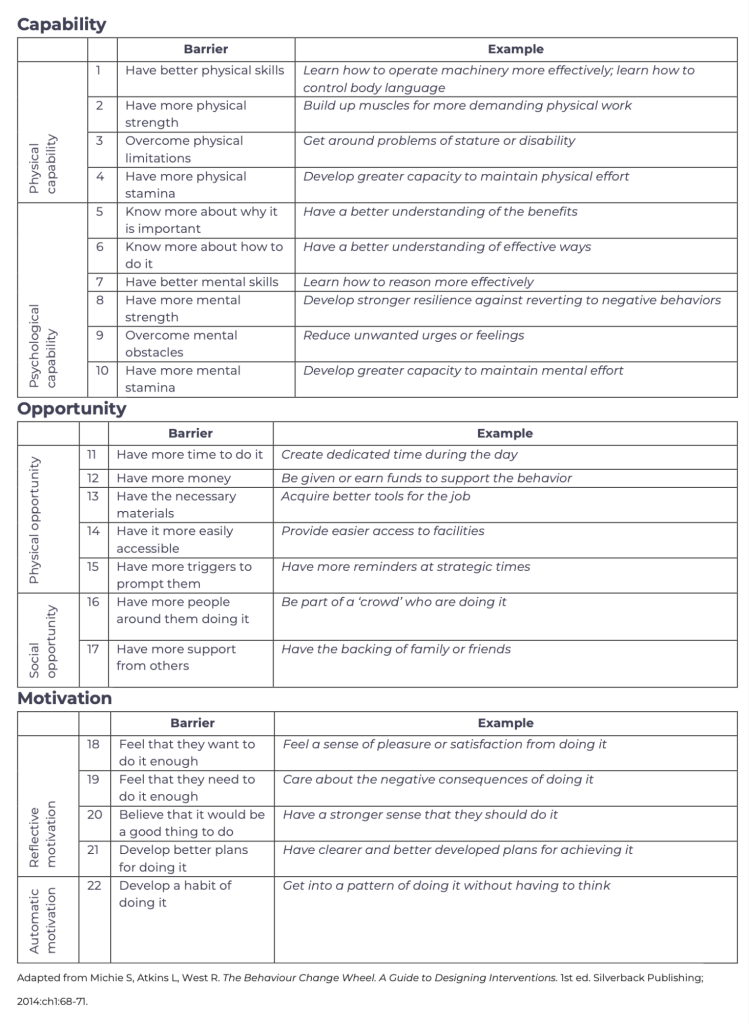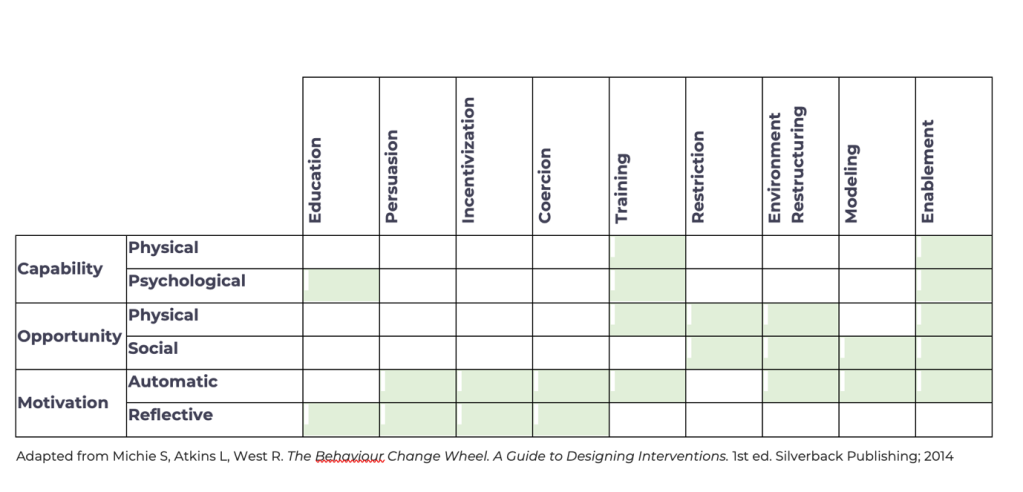Having early training as an occupational psychologist, I have a bias towards wanting to know solutions are evidence based, or support evidence based decision making. It can be tough in L&D to sort good sales from actual models and theories that hold value.
This piece from Wil Procter is helpful in explaining the COM-B approach to diagnosing an issue and offering potential solutions. I’ve not heard of COM-B before, and it’s not a product of a training company. Wil clearly explains how this model can be useful for L&D.
Wil Procter is a Strategy & Innovation Director with a background in learning technology and digital transformation. Wil speaks regularly at conferences and shares useful tips and tools for L&D folks on LinkedIn.
I don’t edit or amend the pieces being written for me. I’m not an editor, and that’s not something that matters for the purposes of this series. Each piece is submitted in the author’s own writing style. I’m also not fact-checking, unless there’s something that needs to be fact-checked.
The Behavioural Science Revolution in L&D: A COM-B Approach
In the world of Learning and Development, people usually come to us because they want someone, or a group of people, to do something differently. Yet, it’s easy fall into the “training trap,” over-relying on courses to solve every issue. And one way to avoid that trap is to borrow from behavioural science.
Behavioural science draws from psychology, sociology, anthropology, and economics to understand human actions and interactions. It examines decision-making processes, the influence of social and environmental factors, and communication patterns.
Such breadth in a field can be daunting and it’s not realistic for all L&D people to become behavioural scientists, but luckily there exists a practical framework that we can use to apply insights from behavioural science effectively and choose appropriate interventions to support our audience in making positive changes.
Introducing COM-B
The COM-B model, conceived by Susan Michie, Maartje van Stralen, and Robert West, posits that behaviour (B) occurs through the interplay of Capability (C), Opportunity (O), and Motivation (M). This framework’s simplicity and intuitive nature make it a powerful tool for identifying behavioural barriers and designing interventions.
The Components of COM-B:
- Capability (C): Encompasses physical and psychological capacity, such as skills and knowledge.
- Physical: Skills, strength, stamina.
- Psychological: Knowledge, mental skills, resilience.
- Opportunity (O): External factors that facilitate or hinder behaviour.
- Physical: Resources, time, accessibility.
- Social: Cultural norms, social support.
- Motivation (M): Reflective and automatic processes that influence behaviour.
- Reflective: Conscious evaluations, intentions.
- Automatic: Habits, impulses, emotional reactions.
Applying COM-B in L&D
The first question to ask with COM-B is: “What needs to change?” This question prevents the knee-jerk reaction to create a course and instead encourages a holistic view of the issues. So, starting with the behaviour you want to encourage, consider:
- Who needs to perform the behaviour.
- When and where the behaviour occurs.
- How often it needs to happen.
- Who else will be involved.

Then, use focus groups, interviews and observation to determine what’s stopping people from performing that behaviour right now. The list below gives a good starting point on what to look for.
Designing Interventions
With barriers identified, the COM-B framework gives a comprehensive list of interventions that are most likely to work. These fall into the following categories:
- Education: Increase knowledge or understanding.
- Persuasion: Using communication to induce positive or negative feelings or stimulate action.
- Incentivization: Create an expectation of rewards.
- Coercion: Creating an expectation of punishment.
- Training: Imparting skills.
- Restriction: Using rules to reduce the opportunity to engage in the target behaviour (or to increase the target behaviour by reducing the opportunity to engage in competing behaviours).
- Environmental restructuring: Changing the physical or social context.
- Modelling: Providing an example for people to aspire to or imitate.
- Enablement: Increasing means/reducing barriers to increase capability (beyond education and training) or opportunity (beyond environmental restructuring).
And can be chosen based on which areas of the COM-B you feel have barriers using the mapping below.

These categories will likely give you inspiration for interventions you can put in place to encourage the behaviour, but the framework also has another level of detail – a comprehensive list of behaviour chance techniques that are proven to be effective for each of these categories, which you can access here: https://www.ucl.ac.uk/behaviour-change/resources/online-tools-behaviour-change
Measuring Success
Because the framework is focused on changing behaviours, the results of your interventions should be easy to measure. Generally, the most effective way to do this is to set up a hypothesis when you define the behaviour at the beginning (remember that question – ‘What needs to change?’) and measure the extent to which people perform that behaviour, or the percentage of a sample doing it before and after your interventions are put in place.
To wrap up…
Integrating behavioural science and the COM-B framework allows L&D professionals to create programs that not only teach new skills but also foster environments where these skills are effectively applied. This approach ensures sustainable behaviour change and aligns learning initiatives with organizational goals.
Further reading:
The Behaviour Change Wheel, by Susan Michie, Lou Atkins & Robert West is the go-to resource for the COM-B framework. More information here: https://www.behaviourchangewheel.com/
Julie Dirksen’s book “Talk to the Elephant” also gives a very accessible starting point on the framework specifically for L&D folks: https://usablelearning.com/the-books/elephant/
This article draws from a longer guide written by Wil Procter and Jessica Holt Ph.D. which is available on request from https://nazarelearning.com/
You may not be able to help with this but I can’t work out how to change my email address
This account will be inactive shortly
hannahcgrant@gmail.com is the new one
I tried to input it to the website but it says it’s blocked and can’t seem to contact WordPress to sort it out
If you can help, great 👍 if not, please publish on Linked In so I still these ! Thank you 🙏